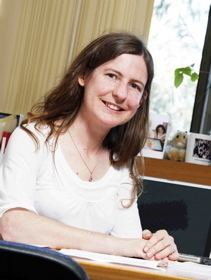Name Debra Searles | Role Chemist | |
 | ||
Bbc news feature on debra searle s atlantic row
Debra Searles is the professional name for an Australian theoretical chemist whose married name is Debra Bernhardt. She is best known for her contributions towards understanding the Fluctuation Theorem. This theorem shows the Second law of thermodynamics and the Zeroth law of thermodynamics can be derived mathematically rather than postulated as laws of Nature.
Contents
- Bbc news feature on debra searle s atlantic row
- Personal Profile
- Research interests
- Selected publications
- References
Personal Profile
Bernhardt has previously worked as an Associate Professor in the Faculty of Science at Griffith University. During her time at Griffith University, she became the founding Director of the Queensland Micro- and Nanotechnology Centre. Her PhD studies were in the field of quantum chemistry and her fields of research now include statistical mechanics, dynamical systems theory, nonequilibrium fluids and molecular dynamics simulations of fluids. In 2012, Bernhardt joined the University of Queensland as a Professor in a joint appointment between the School of Chemistry and Molecular Biosciences and the Australian Institute of Bioengineering and Nanotechnology. In the past, Bernhardt has also held research positions at the University of Basel in Switzerland and Australian National University.
Research interests
Bernhardt's research interests are in the study of liquids under equilibrium and nonequilibrium conditions, development of the theory of nonequilibrium fluids and use of simulations to assist in understanding experimental results. Current research projects include:
Study of nonequilibrium liquids via statistical mechanics; nonequilibrium molecular dynamics; dynamical systems theory; chaos theory The fluctuation theorem The study of fluids in confined spaces Development of algorithms for molecular dynamics simulations Calculation of liquid properties: Combining molecular dynamics simulations with quantum mechanical calculations to determine properties of liquids
